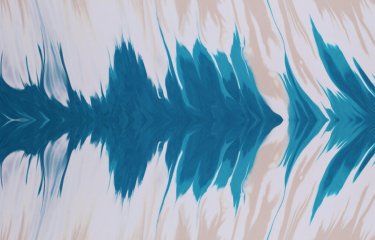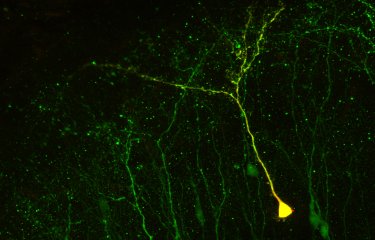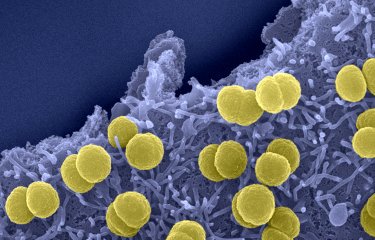A team from the Institut Pasteur working with the CNRS (French National Center for Scientific Research) has shown in an article published in the EMBO Journal that a yeast can be used as a cell model for a rare and severe neurodegenerative disease affecting adolescents. This discovery could provide researchers with an unexpected and particularly effective tool for studying the genetics of this pathology and that of other diseases linked to the degeneration of nerve cells.
Press release
Paris, febuary 5, 2009
Levures Schizosaccharomyces pombe en fluorescence vues par microscopie confocale, montage © L.Chatre/Institut PasteurBenoît Arcangioli and Samia Ben Hassine from the Dynamics of the Genome unit at the Institut Pasteur (CNRS URA 2171) have shown how the yeast Schizosaccharomyces pombe can mimic, at the single cell level, the syndrome observed in humans in the case of spinocerebellar ataxia known as SCAN1. This rare and severe neurodegenerative disease is characterized by a loss of balance and coordination in adolescents, and results in death around the age of 25. It is caused by the progressive death of cells that do not divide, particularly neurons from the cerebellum, responsible for transmitting information to limbs and the brain.
Thanks to a strain of yeast mutated in the gene homolog to the one affected in SCAN1 patients, scientists have been able to identify similarities in the “symptoms” observed: yeasts deficient in this gene, program their own death when they do not divide, just like the nerve cells of patients.
“For 20 years, yeasts were recognized as efficient models of human cell division able to mimic the cancerization process. Today we are showing that, conversely, they can behave like neurons, i.e. cells that do not divide!”, explains Benoît Arcangioli. Development of such a model should therefore not only provide an original research tool for SCAN1, but also open up new avenues of exploration for other neurodegenerative diseases, such as Parkinson’s disease.
Photo : Schizosaccharomyces pombe, fluorescence, confocal microscopy.
© L.Chatre/Institut Pasteur
Source
Tdp1 protects against oxidative DNA damage in non dividing fission yeast, Embo Journal, published online on February 5, 2009.
Samia Ben Hassine and Benoit Arcangioli.
Institut Pasteur, Dynamics of the Genome unit, CNRS URA2171, Paris.
Contacts presse
Institut Pasteur Press Office
Marion Doucet – +33 (0)1 45 68 89 28 – marion.doucet@pasteur.fr
Nadine Peyrolo – +33 (0)1 45 68 81 47 – nadine.peyrolo@pasteur.fr
CNRS Press Office
Julien Guillaume – +33 (0)1 44 96 46 35 - julien.guillaume@cnrs-dir.fr





